Supine Hypotensive Syndrome Treatment
Supine hypotensive syndrome treatment. Supine Hypotensive Syndrome Treatment - turn patient immediately on her side - either lateral decubitus position LLDIVC is right - patient feels better immediately. Supine hypotensive syndrome often occurs only in mothers who are greater than 20 weeks pregnant and results as the gravid uterus obstructs the inferior vena cava which in turn reduces venous return and blood preassure. Aortocaval compression syndrome is also known as a supine hypotensive syndrome.
1 pregnant patient lies supine then 2 becomes faint and nauseous. Rarely it may manifest even from the fifth month of pregnancy or postpartum as well as in the pelvic tilt or sitting positions. It typically occurs in pregnant females usually after 20 weeks of gestation when the patient is in the supine position.
In our cohort the first episode of supine hypotension occurred in the open label pilot study Kim et al 2011b. Drugs used for the treatment of orthostatic hypotension eg fludrocortisone and pressor agents worsen supine hypertension. High flow oxygen mask should be used via non-rebreathe.
Blood flow from the lower extremities back to the maternal heart and central circulation is impeded due to the uterus compressing the inferior. This pathophysiologic state occurs in a pregnant female typically after 20 weeks gestation when the patient is placed in the percent position. The patient should lie on the left lateral recumbent position or should lie in elevated right hip position.
During your assessment and interview she tells you that she is sexually active and there is a chance she could be pregnant. This was ascribed to the difficulty in achieving control of the diabetic condition. Supine hypotensive syndrome can be managed through appropriate patient positioning.
This includes having the patient lie on her left side with a blanket under her left hip. Left lateral tilt to 1530 is achieved by placing a wedge under the right hip and is used in practice for labor and delivery as well as nonobstetric surgery in pregnant patients undergoing anesthesia to prevent supine hypotensive syndrome. This may help to.
Transport with a quiet gentle ride. Supine hypertension can be severe and complicates the treatment of orthostatic hypotension.
Aortocaval compression syndrome is also known as a supine hypotensive syndrome.
1 pregnant patient lies supine then 2 becomes faint and nauseous. Transport with a quiet gentle ride. Rarely it may manifest even from the fifth month of pregnancy or postpartum as well as in the pelvic tilt or sitting positions. Supine Hypotensive Syndrome Maternal Hypotension. This condition is known as. Resuscitate the patient with warmed crystalloid administered through large-bore catheters placed for intravenous lines because the relative hypervolemia of pregnancy. This includes having the patient lie on her left side with a blanket under her left hip. The patient should lie on the left lateral recumbent position or should lie in elevated right hip position. Left lateral tilt to 1530 is achieved by placing a wedge under the right hip and is used in practice for labor and delivery as well as nonobstetric surgery in pregnant patients undergoing anesthesia to prevent supine hypotensive syndrome.
Left lateral tilt to 1530 is achieved by placing a wedge under the right hip and is used in practice for labor and delivery as well as nonobstetric surgery in pregnant patients undergoing anesthesia to prevent supine hypotensive syndrome. It typically occurs in pregnant females usually after 20 weeks of gestation when the patient is in the supine position. Her vital signs are pulse 122 respirations 22. Supine hypotensive syndrome can be managed through appropriate patient positioning. This includes having the patient lie on her left side with a blanket under her left hip. Treat for shock if other signs of shock are present. Blood flow from the lower extremities back to the maternal heart and central circulation is impeded due to the uterus compressing the inferior.

/Supine-hypotension-syndrome-4773731-V3-793136b0fa7f40f5a1f02402fae76aa4.png)

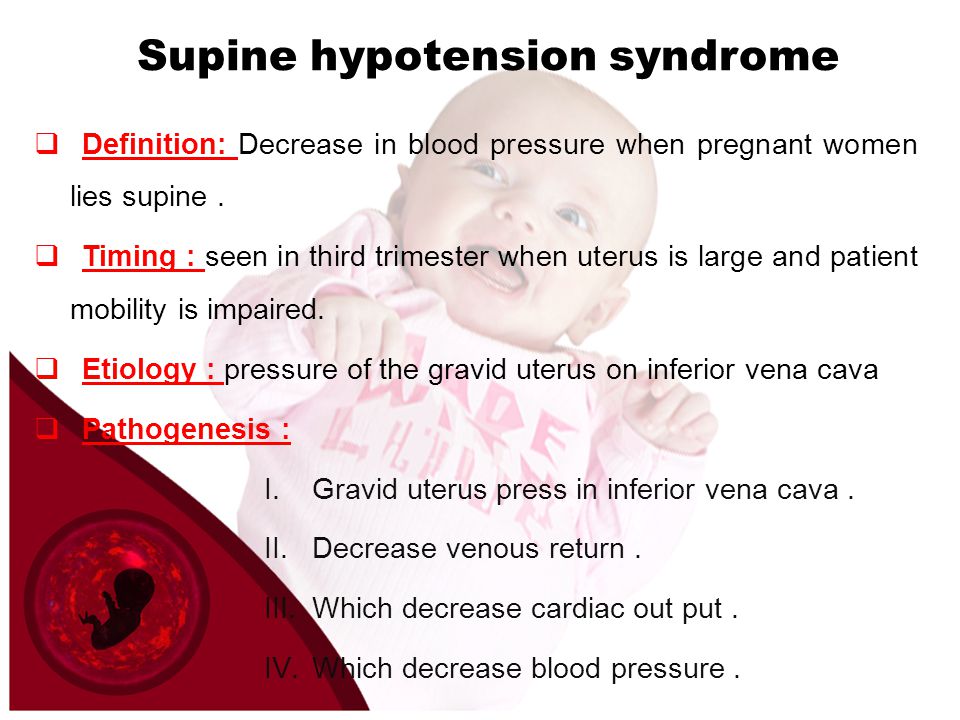
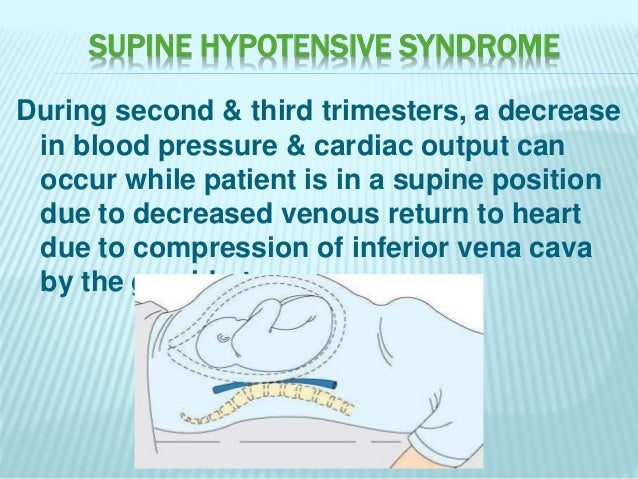





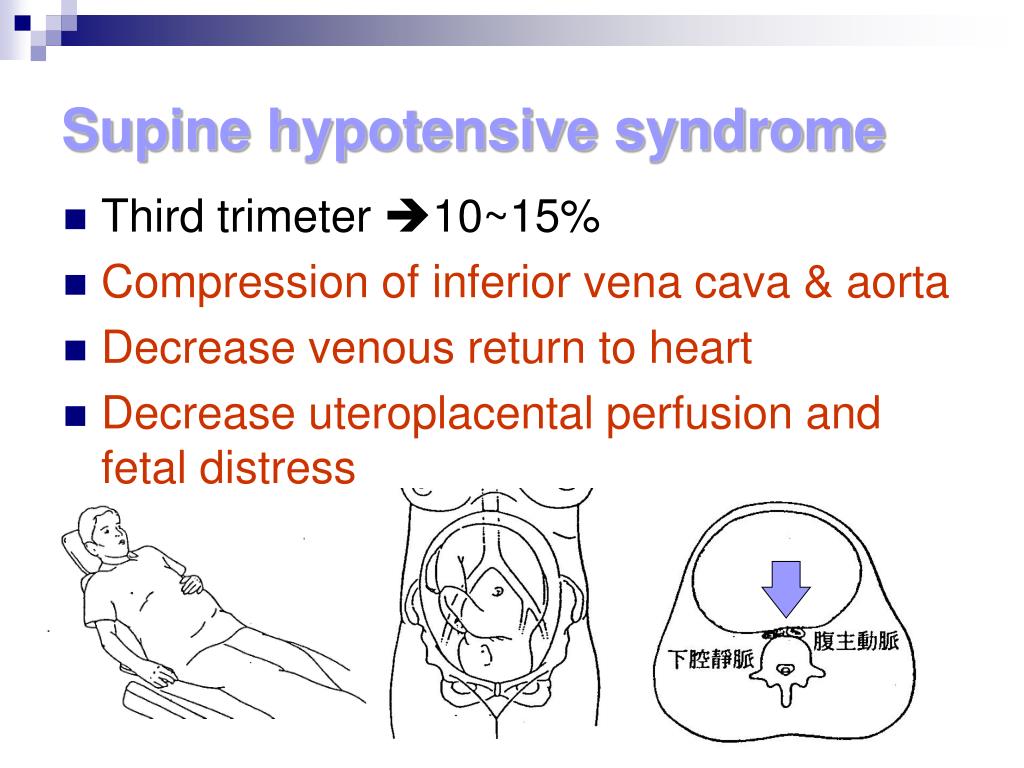
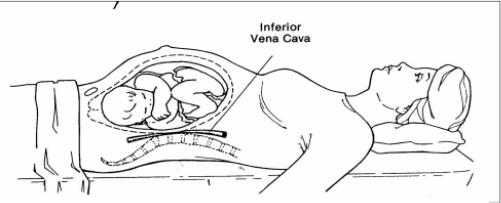

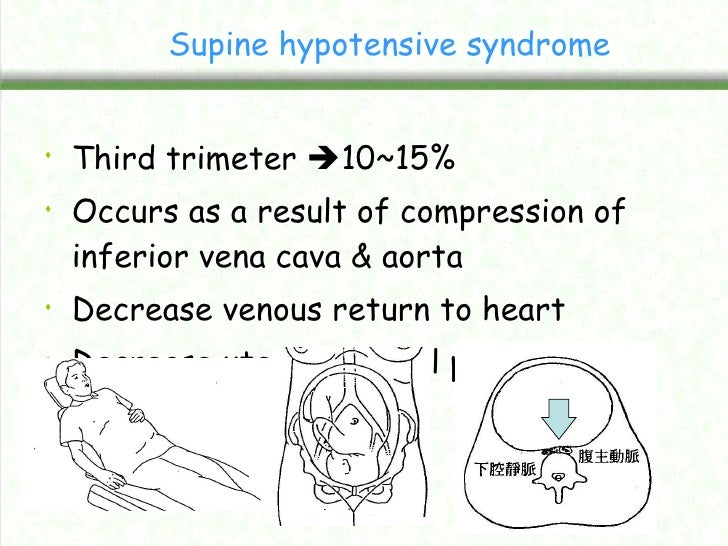

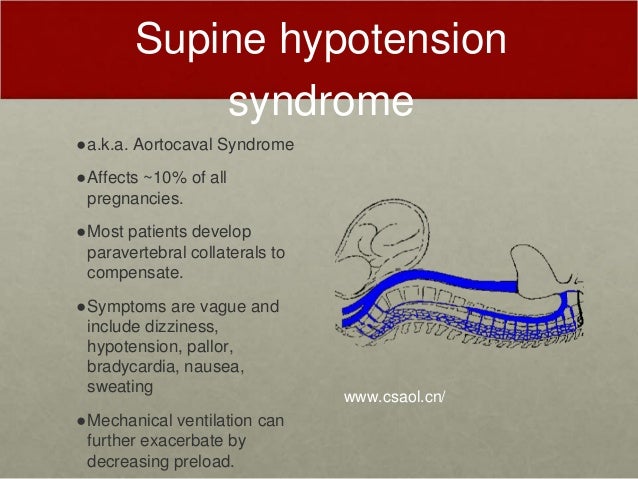






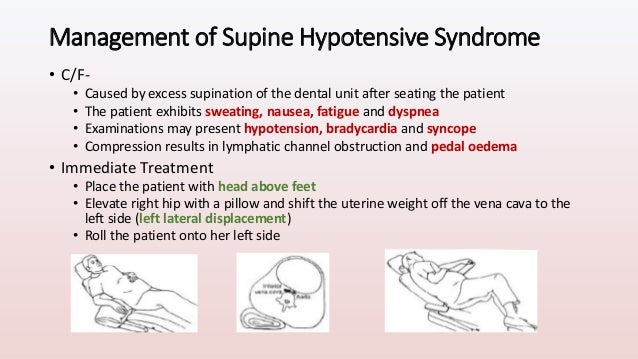


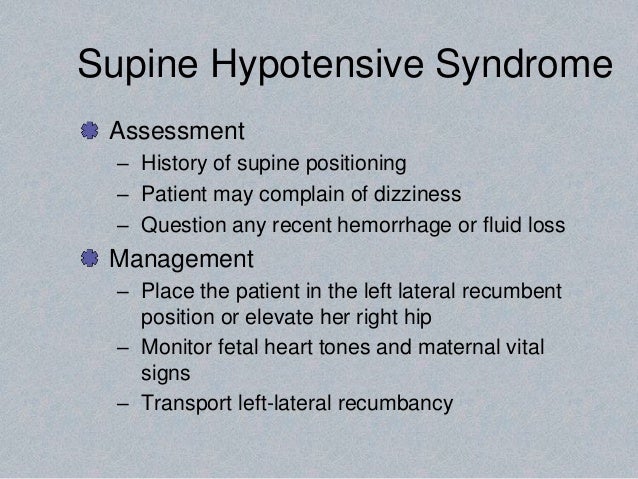












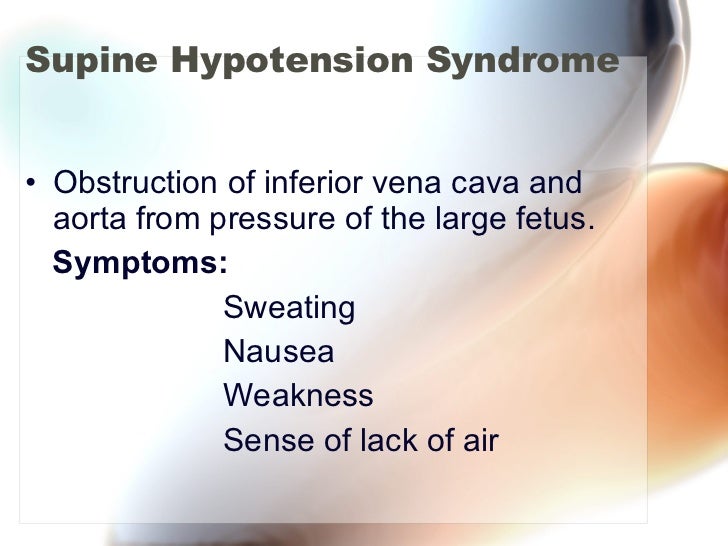
Post a Comment for "Supine Hypotensive Syndrome Treatment"